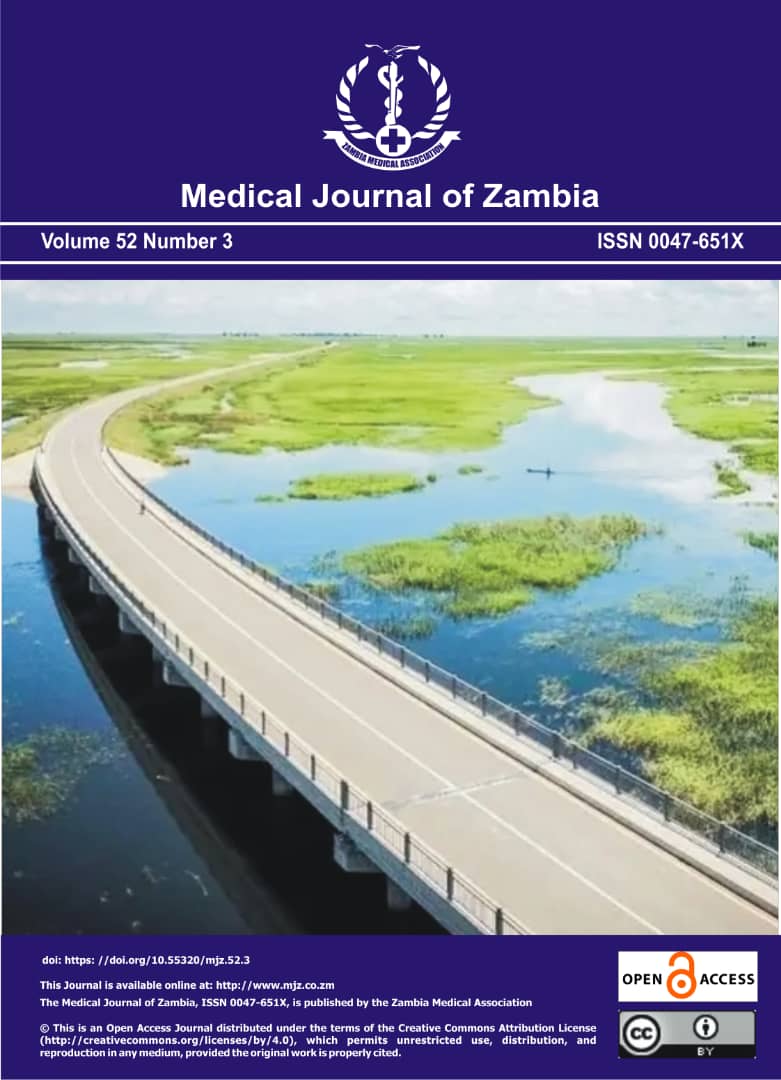Spontaneous Subdural Haematoma as a Rare Presentation of Ruptured Vascular Lesions: A Case Report of Three Patients
DOI:
https://doi.org/10.55320/mjz.52.3.653Keywords:
Aneurysm rapture, Internal carotid artery, acute subdural hematoma, subarachnoid haemorrhage, intracerebral hematoma, arteriovenous malformationAbstract
Background: Spontaneous acute subdural hematoma (sASDH) is a rare presentation of aneurysmal and other vascular malformation rupture. There are only few cases reported in the literature, especially in the absence of SAH. The annual haemorrhagic risk is estimated at 1–3% for unruptured AVMs and 4–6% for those ruptured. We share three rare cases to highlight the significance of initial early vascular studies in unique clinical presentations and demographics of resource limited settings such to prompt new management protocols.
Case presentation: The first patient was a 60-year-old female with an unremarkable medical history who presented with a ruptured internal carotid-posterior communicating artery (ICA-PcomA) junction aneurysm and a temporal lobar intracerebral hematoma (ICH). Craniotomy with hematoma evacuation and aneurysm clipping was performed in a single surgery. She recovered with minimal neurological deficit.
The second patient was a 66-year-old female, known hypertensive with poor compliance who presented with ruptured anterior communicating artery (AcomA) aneurysm. She had a frontal lobe hematoma, Fischer 3 SAH, and multiple haemorrhagic lesions involving the brainstem. Unfortunately, she was not a good surgical candidate and therefore managed conservatively in the acute period.
The third patient was a 40-year-old male who presented with an extensive spontaneous subacute subdural hematoma. He underwent craniotomy and hematoma evacuation when a small cortical AVM was incidentally found intraoperatively and scheduled for delayed resection after CT angiography.
Conclusions: Spontaneous acute subdural hematoma is a rare presentation of a ruptured vascular malformation and often under diagnosed in resource limited settings where non-contrasted CT brain scans are first imaging of choice in the acute emergency setting. The reported cases serve as a reminder to the neurosurgeon, neurologist, radiologist and other relevant clinical specialists the need for adequately initial radiological investigation of patients with suspected spontaneous SDH. Additionally, CT angiography should be considered in future protocols for all patients presenting with signs of acute nontraumatic SDH to exclude vascular malformations. However, in cases where angiography is not readily available, emergency haematoma evacuation should not be delayed if indicated.
Downloads
Downloads
Published
Issue
Section
License
Copyright (c) 2025 Medical Journal of Zambia

This work is licensed under a Creative Commons Attribution-NonCommercial 4.0 International License.









